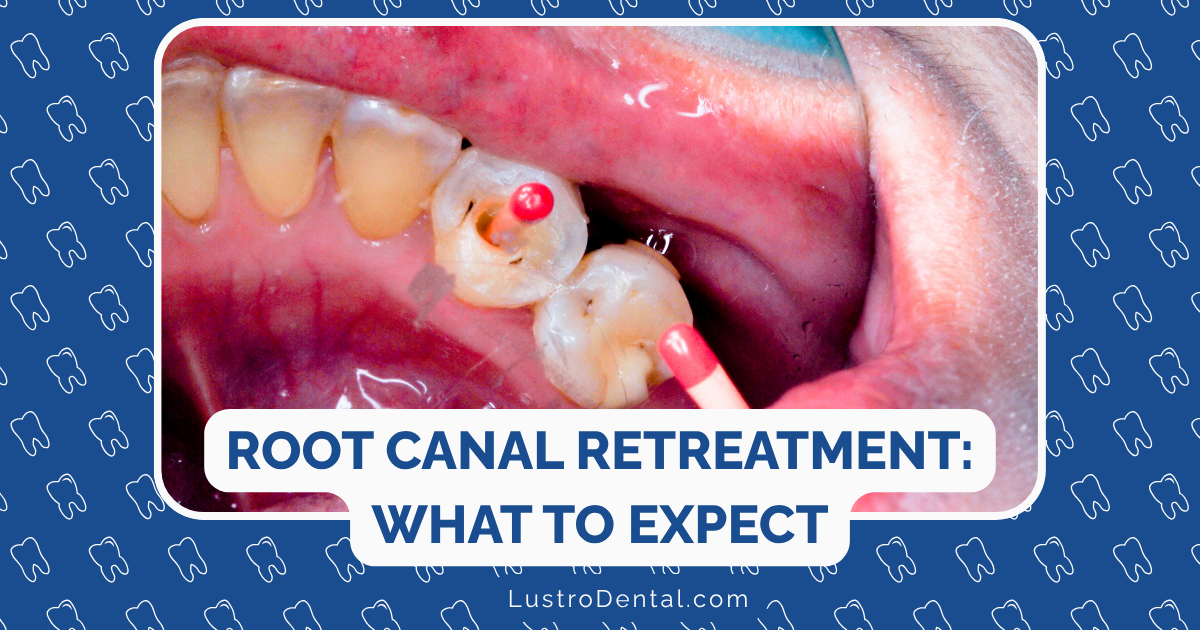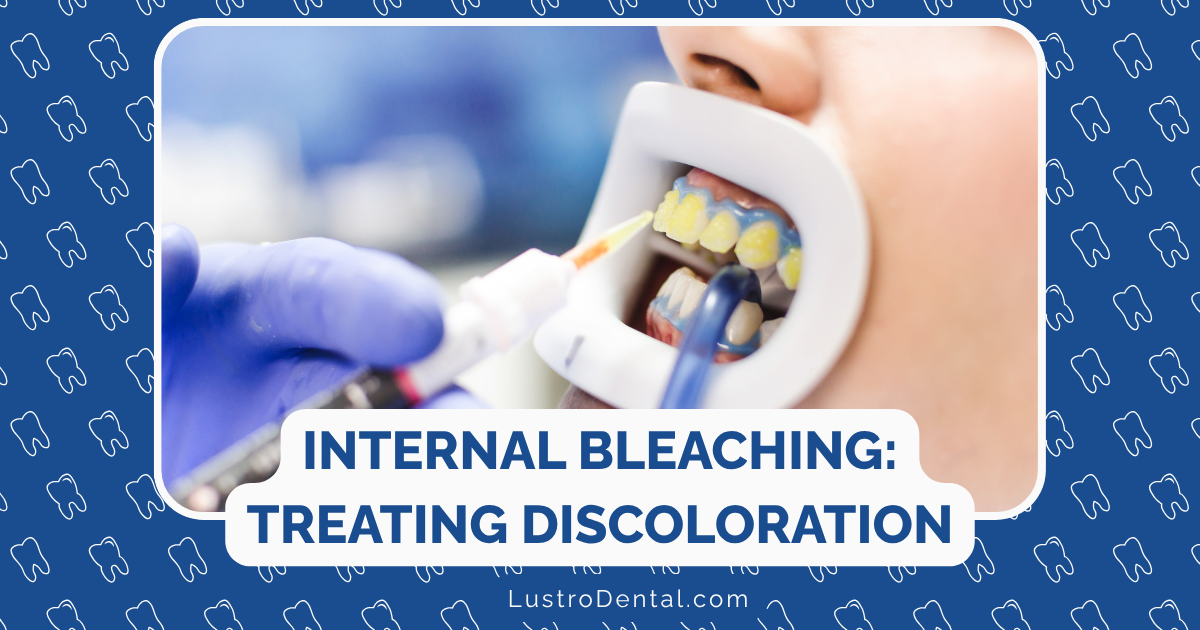The Retreatment Process: What to Expect When Redoing a Root Canal

Learning that a previous root canal treatment needs to be redone can be disappointing and concerning. You’ve already been through the procedure once, and now you’re facing it again. It’s natural to have questions about what retreatment involves, why it’s necessary, and what you can expect during the process.
As someone who’s guided many patients through endodontic retreatment, I understand these concerns. In this comprehensive guide, I’ll walk you through the entire retreatment process—from diagnosis to recovery—to help you feel more informed and at ease about the procedure ahead.
Understanding Root Canal Retreatment: A Second Chance for Your Tooth
Root canal retreatment is essentially a do-over of a previous root canal procedure. It involves reopening the tooth, removing the existing filling material, addressing any issues that caused the initial treatment to fail, and then refilling and resealing the canals.
According to the American Association of Endodontists, “Teeth that have undergone root canal treatment can last a lifetime with proper care.” However, sometimes healing doesn’t occur as expected, and retreatment becomes necessary to save the tooth.
Why Retreatment Might Be Necessary: Common Causes of Root Canal Failure
Understanding why your initial root canal didn’t succeed can help you appreciate the importance of retreatment. Here are the most common reasons a previous root canal might need to be redone:
1. Complex Canal Anatomy
Some teeth have intricate canal systems with branches, curves, or additional canals that may have been missed during the initial treatment. Dr. Sarah Johnson, endodontist at Soft Touch Endodontics, explains: “Even with advanced imaging, extremely narrow or curved canals can sometimes be difficult to detect and treat completely the first time around.”
2. Inadequate Cleaning or Filling
If the canals weren’t thoroughly cleaned or properly filled during the initial procedure, bacteria may have remained or re-entered the canal system, leading to persistent infection.
3. Delayed or Inadequate Restoration
According to a study published in Nature, “The restorative status of a tooth is crucial for achieving an optimal coronal seal.” If a permanent restoration (filling or crown) wasn’t placed promptly after the root canal, or if it doesn’t provide an adequate seal, bacteria can recontaminate the canal system.
4. New Infection or Damage
Even a perfectly performed root canal can be compromised by:
- New decay reaching the root canal filling
- A cracked or fractured tooth
- A loose, broken, or failing crown
- Trauma to the tooth
5. Persistent Infection
In some cases, resistant bacteria may have survived the initial treatment despite best efforts, particularly in teeth with complex anatomy or severe infection.
Signs That Retreatment May Be Needed
How do you know if your previous root canal needs to be redone? Here are common indicators:
- Persistent or returning pain, especially when biting or applying pressure
- Swelling in the gums around the treated tooth
- Pimple-like bump (fistula) on the gums near the tooth
- Sensitivity to hot or cold that lingers after the stimulus is removed
- Discoloration of the treated tooth
- X-ray findings showing signs of infection or incomplete healing
If you experience any of these symptoms, it’s important to consult with your dentist or endodontist promptly. Early intervention typically leads to better outcomes.
The Retreatment Process: A Step-by-Step Breakdown
Understanding what happens during retreatment can help alleviate anxiety about the procedure. Here’s a detailed look at what you can expect:
1. Diagnosis and Treatment Planning
What happens: Your endodontist will conduct a thorough examination, including:
- Reviewing your dental and medical history
- Performing clinical tests to assess symptoms
- Taking new X-rays or 3D imaging (CBCT scans)
- Discussing treatment options and developing a plan
What you’ll experience: This initial consultation is non-invasive and focuses on gathering information. Your endodontist will explain their findings and recommendations, answer your questions, and address any concerns you may have.
2. Preparation for the Procedure
What happens: Before beginning the retreatment:
- Local anesthesia will be administered to numb the area
- A rubber dam (a small sheet of rubber) will be placed around the tooth to keep it clean and dry
- If you have a crown, it may need to be removed to access the inside of the tooth
What you’ll experience: The anesthesia process is similar to other dental procedures—you’ll feel a pinch from the injection, but the area will quickly become numb. The rubber dam placement is painless and helps ensure a comfortable, safe procedure.
3. Removing Previous Materials
What happens: The endodontist will:
- Create an opening in the tooth (through the crown if it wasn’t removed, or directly into the tooth)
- Remove the existing filling material (gutta-percha), cement, and any posts or other materials in the canals
- Use specialized instruments, solvents, or heat to facilitate removal
What you’ll experience: This part of the procedure is performed under anesthesia, so you shouldn’t feel pain. You may hear instruments working and feel some pressure or vibration, but these sensations are normal and not cause for concern.
4. Cleaning and Reshaping the Canals
What happens: Once the canals are accessible, the endodontist will:
- Thoroughly clean the canals using specialized instruments and antimicrobial solutions
- Look for additional canals, fractures, or other issues that may have been missed previously
- Use advanced techniques to negotiate blocked canals or address other complications
- Shape the canals to prepare them for new filling material
What you’ll experience: This part of the procedure is also performed under anesthesia. It’s typically the most time-consuming portion of retreatment, especially if the canals are calcified (narrowed) or if there are other complications to address.
5. Filling and Sealing the Canals
What happens: After cleaning and shaping:
- The canals are dried and carefully measured
- New filling material (typically gutta-percha) is placed
- A sealer is used to ensure a tight seal against future infection
- The access opening is closed with a temporary filling
What you’ll experience: This final phase of the active procedure is straightforward and performed while you’re still numb. Your endodontist may take a final X-ray to verify that the filling material is properly placed.
6. Restoration of the Tooth
What happens: After the retreatment is complete:
- You’ll need a permanent restoration to protect the tooth
- This may involve placing a new filling or crown
- If your existing crown was preserved, it might be reattached temporarily until a new one can be made
What you’ll experience: The restoration process may be completed by your general dentist in a separate appointment. This is a crucial step in ensuring the long-term success of your retreatment.
Recovery: What to Expect After Retreatment
The recovery process after root canal retreatment is generally similar to that of an initial root canal, though some patients report slightly more discomfort due to the more complex nature of the procedure.
Immediate Post-Procedure (First 24 Hours)
What to expect:
- The anesthesia will wear off within a few hours
- Mild to moderate discomfort is common as the anesthesia subsides
- The treated area may feel sensitive, especially when biting or chewing
- Some swelling may occur, though it’s usually minimal
Managing recovery:
- Take over-the-counter pain relievers as recommended by your endodontist
- Apply ice packs externally (15 minutes on, 15 minutes off) if swelling occurs
- Avoid chewing on the treated tooth
- Stick to soft foods that don’t require much chewing
- Continue gentle brushing and flossing, being careful around the treated area
Short-Term Recovery (First Week)
What to expect:
- Discomfort should gradually diminish over the first few days
- The tooth may feel slightly different from your other teeth
- If you have a temporary filling, it needs to be protected until your permanent restoration is placed
Managing recovery:
- Continue taking pain medication as needed (most patients find they need less after 2-3 days)
- Avoid hard, crunchy, or sticky foods that could damage the temporary filling
- Call your endodontist if pain increases rather than decreases, or if swelling worsens
Long-Term Healing (Weeks to Months)
What to expect:
- Full healing of the tissues around the root can take weeks to months
- The tooth should feel increasingly normal as healing progresses
- Success of the retreatment becomes more apparent over time
Managing recovery:
- Keep all follow-up appointments with your endodontist and dentist
- Get your permanent restoration placed as soon as recommended
- Maintain excellent oral hygiene to support healing
- Report any persistent symptoms to your endodontist
According to Twin Oaks Family Dental, “The healing process after a root canal re-treatment typically takes one to four weeks,” though complete healing of the bone around the root can take longer.
Success Rates: What Are the Odds Retreatment Will Work?
One of the most common questions patients have is about the likelihood of success with retreatment. Recent research provides encouraging data:
- A 2023 meta-analysis published in the Journal of Dentistry found that non-surgical root canal retreatment has a success rate of:
- 87% under loose criteria after 1-3 years
- 77% under strict criteria after 4-5 years
- According to Utica Dental, modern techniques and technologies have improved retreatment outcomes significantly.
Several factors influence the success of retreatment:
Factors That Improve Success Rates
- Early intervention: Addressing failed root canals promptly before extensive damage occurs
- Specialist care: Treatment by an endodontist with advanced training and equipment
- Advanced imaging: Use of CBCT (3D) imaging to identify all canals and potential issues
- Modern techniques: Ultrasonic instruments, microscopes, and other specialized tools
- Proper restoration: Timely placement of a well-fitted crown or permanent filling
Factors That May Reduce Success Rates
- Complex anatomy: Severely curved or calcified canals
- Extensive infection: Large periapical lesions (>5mm)
- Structural issues: Cracks, fractures, or insufficient remaining tooth structure
- Delayed treatment: Allowing infection to progress before seeking retreatment
Dr. Michael Chen, endodontic researcher, notes: “With modern techniques and materials, we can successfully retreat many cases that would have been considered hopeless in the past. The key is proper case selection and realistic expectations.”
Alternatives to Retreatment: When Other Options Might Be Considered
While retreatment is often the preferred approach for saving a tooth with a failed root canal, it’s not the only option. Your endodontist may discuss these alternatives depending on your specific situation:
1. Endodontic Surgery (Apicoectomy)
If retreatment isn’t possible or likely to succeed, an apicoectomy may be recommended. This surgical procedure:
- Accesses the root tip through the gum tissue
- Removes the infected root tip and surrounding tissue
- Seals the end of the root canal
- Allows healing while preserving the tooth
Modern microsurgical techniques have improved the success rates of this procedure significantly.
2. Extraction and Replacement
In some cases, removing the tooth may be the most appropriate option, particularly if:
- The tooth is severely damaged or fractured
- There isn’t enough healthy tooth structure remaining
- Previous treatments have repeatedly failed
- The cost-benefit analysis favors replacement
If extraction is necessary, replacement options include:
- Dental implant
- Fixed bridge
- Removable partial denture
3. Intentional Replantation
This less common procedure involves:
- Extracting the tooth
- Performing root canal treatment outside the mouth
- Reinserting the tooth into its socket
This is typically considered only in very specific circumstances when other options aren’t viable.
Making Your Decision: Factors to Consider
When deciding whether to proceed with retreatment, consider:
- Long-term prognosis: What are the chances of success given your specific situation?
- Functional importance: How crucial is this tooth for chewing and maintaining proper bite?
- Aesthetic concerns: Is this a visible tooth where appearance matters?
- Cost considerations: How does the cost of retreatment compare to alternatives?
- Personal preference: How important is it to you to save your natural tooth?
Dr. Lisa Wong, endodontist at Canyon Ridge Endodontics, advises: “The decision should be individualized based on your specific clinical situation, overall dental health, and personal preferences. A thorough discussion with your endodontist can help you make the choice that’s right for you.”
Preparing for Your Retreatment Appointment: Practical Tips
To ensure the smoothest possible experience, consider these preparation tips:
Before Your Appointment
- Gather information: Bring previous dental records, X-rays, and a list of medications you’re taking.
- Ask questions: Write down any questions or concerns to discuss with your endodontist.
- Arrange transportation: If you’ll be receiving sedation, arrange for someone to drive you home.
- Take prescribed medications: If your endodontist prescribes antibiotics or other medications beforehand, take them as directed.
- Eat normally: Unless specifically instructed otherwise, eat a normal meal before your appointment.
The Day of Treatment
- Arrive early: Give yourself extra time to complete paperwork and relax before the procedure.
- Wear comfortable clothing: Choose loose, comfortable clothes for your appointment.
- Communicate concerns: Let your endodontist know if you’re feeling anxious or have specific concerns.
- Follow instructions: Adhere to any pre-procedure guidelines provided by your endodontist.
Cost Considerations: Financial Aspects of Retreatment
Root canal retreatment typically costs more than initial treatment due to its increased complexity and the additional time required. Here are some financial considerations:
- Insurance coverage: Many dental insurance plans cover endodontic retreatment, though coverage amounts vary. Check with your provider about specific benefits.
- Payment options: Many endodontic practices offer payment plans or financing options to help manage costs.
- Cost comparison: When weighing alternatives, consider the long-term costs. While extraction may seem less expensive initially, the cost of tooth replacement (especially with implants) often exceeds that of retreatment.
According to the AAE, “The cost to retreat a tooth is generally higher than the cost of initial treatment,” but many patients find the investment worthwhile to save their natural tooth.
Conclusion: A Second Chance for Your Tooth
Root canal retreatment offers a valuable second chance to save a tooth that continues to cause problems despite previous endodontic therapy. With modern techniques, specialized equipment, and the expertise of skilled endodontists, retreatment has become a predictable and effective procedure with good long-term outcomes.
While facing retreatment may feel discouraging, remember that the goal remains the same: to relieve pain, eliminate infection, and preserve your natural tooth for years to come. By understanding what the process entails and what to expect during recovery, you can approach retreatment with confidence and realistic expectations.
If you’re experiencing symptoms that suggest your root canal may have failed, don’t hesitate to seek evaluation from an endodontist. Early intervention typically leads to better outcomes and can help you avoid more complex or costly treatments down the road.
Have you experienced root canal retreatment? Do you have questions about the process? Share your thoughts or concerns in the comments below, and we’ll address them in a future post!







